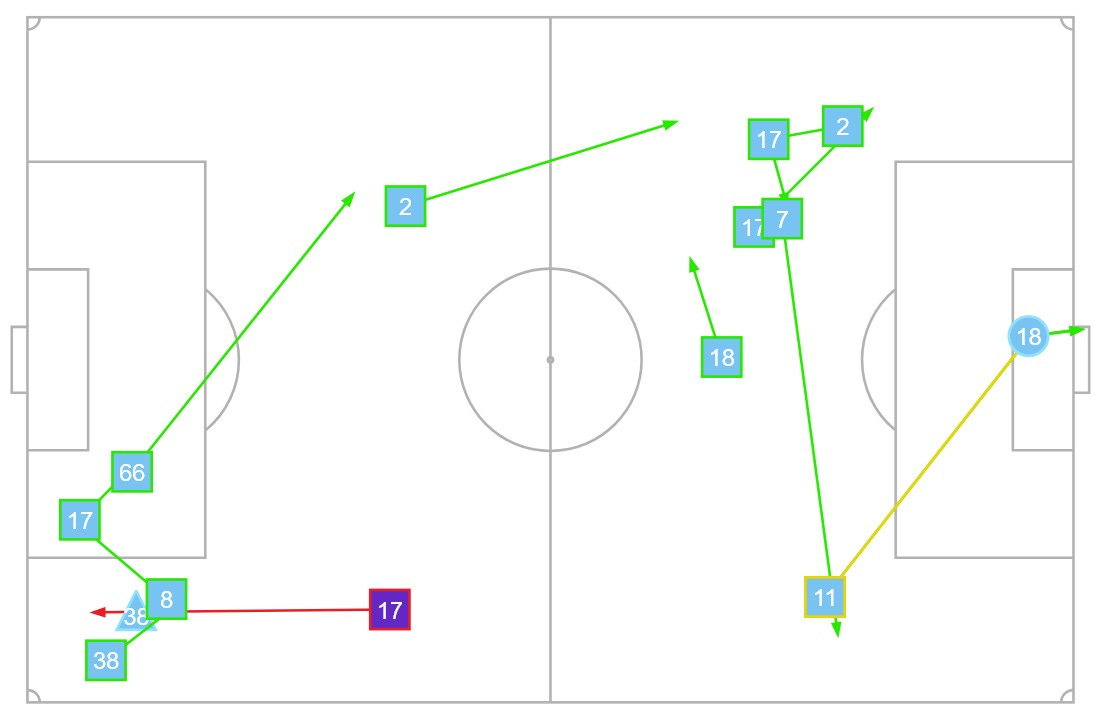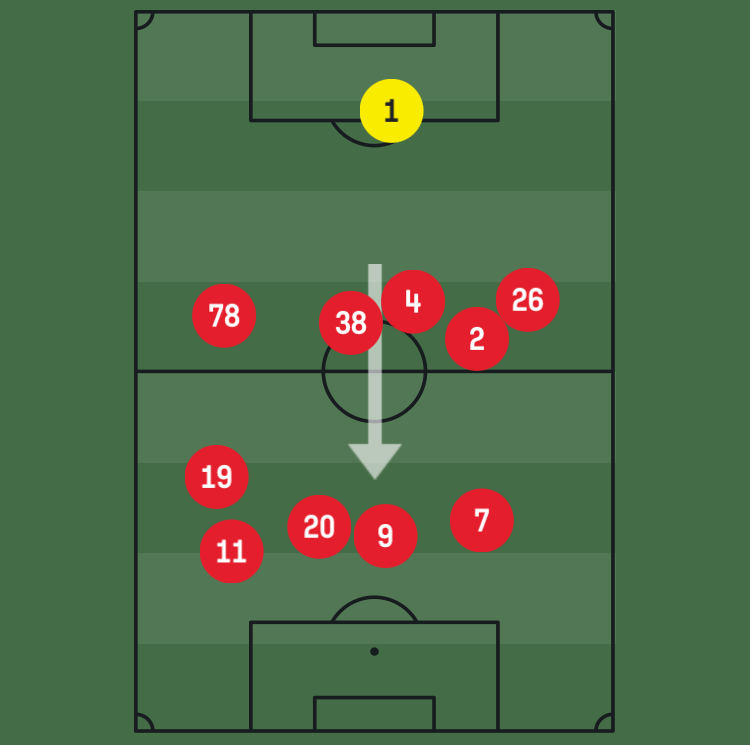Stat of the Match: Liverpool 2-2 Fulham
Liverpool played with 10 men for 73 minutes. Most Premier League teams would be happy with their performance if they had 11 players
Liverpool drew 2-2 with Fulham in a remarkable match at Anfield on Saturday. Supporters of the Reds’ title rivals will have delighted in Arne Slot’s side dropping points for a second consecutive Premier League match; I’ve rarely been more convinced that they can win the league this season.
To play so well when a man down for so long speaks volumes for the quality and resilience of the players, allied to the supreme coaching from which they benefit.
Andy Robertson’s 17th minute dismissal is the second earliest Liverpool have ever suffered, at least according to the record books at LFC History. At that point, the Reds had taken one shot, valued at just 0.04 expected goals, per FBRef. Essentially everything they offered offensively occurred when playing 10 against 11.
While there was much to admire about their performance, their sheer patience shown when attacking is to be particularly commended. All 16 shots the Reds took were hit from inside the penalty area despite them trailing for almost exactly half of the contest.
Only five times this season have they had more box shots. Even then, the record of 19 was against West Ham in the Carabao Cup, who themselves had Edson Álvarez sent off. Their best against a full complement of opponents occurred at Southampton (18), but they are the worst team in the top flight whereas Fulham are fourth in the expected points table. By the measure of xG, Marco Silva’s side have been better than Manchester City and Chelsea in 2024/25, yet Slot’s side arguably deserved to beat them with 10 men.
The 2.1 expected goals which Liverpool generated is the second most Fulham have conceded this season, after the 2.4 they allowed at Manchester United in match week one.
The non-penalty xG total is one of only 22 instances since 2017 of a Premier League team recording that much when also receiving a red card. But almost half of the others lost a man in the final six minutes or later; the closest comparable example is Chelsea having Thiago Silva sent off after 21 minutes against West Brom in 2021. They lost 5-2.
On Opta’s pass value metric, this was the best performance delivered against the Whites in 2024/25, with the home side completing a very healthy 89 per cent of their passes when down a man.
As with the xG, Liverpool broke new ground for progressive passes in terms of three players (the trio of forwards) all receiving at least 10. There is an example of a team doing this roughly once a week on average, but none of the other instances this season were by a side who had a man sent off, much less with it happening after barely more than quarter of an hour had elapsed.
Even if the game state encouraged the Reds to attack, to do so with such fierce focus and supreme efficiency is to be applauded. The highlight of their performance, both aesthetically and in expected goal terms, was the first equaliser.
It was a superb team move. Ryan Gravenberch - the player of the match - intercepted the ball, then with the help of his fellow midfielders working possession to Trent Alexander-Arnold, the Reds were able to get out from the back. With Joe Gomez advancing up field before the three forwards had the final three touches of the move, every player except Alisson Becker and Virgil van Dijk was involved in a sequence comprised of just 11 passes.
The shot was one of 10 Liverpool had in the central ‘danger zone’ of the penalty area, which covers the width of the six-yard box out to the 18-yard line. Only twice this season have the Reds generated more such efforts, even if the xG from them was understandably lower than in other games this time around.
Slot’s approach to the problem of being a man down for so long was fascinating. He made no substitution for over 50 minutes following the red card, biding his time before cranking up the pressure on the visitors.
Gravenberch became a centre-back, until Jarell Quansah was brought on in the second half, with Darwin Núñez replacing Cody Gakpo at the same time. For the final 11 minutes, the Reds played in something approaching a 3-1-3-2 system with four forwards on the field.
The average position chart below shows the starters plus the substitutes, with Darwin and Diogo Jota occupying very central areas. You can see too how high Mohamed Salah and Luis Díaz remained throughout. The Colombian deserves particular praise for his work rate; per Statsbomb (via Sean Rogers of The Anfield Wrap), he led the Reds for pressures, with 32.
The game was ultimately rescued by the returning number 20. Welcome back, Diogo. The whole team makes more sense when the Portuguese international is part of it. Liverpool had five danger zone shots with Jota on the pitch, with him either creating or shooting four of them.
He has been directly involved in 3.1 per 90 minutes this season, with Salah (2.6) and Díaz (2.4) the only other men north of two. This trio were Slot’s chosen front line for the first four games plus the win at Wolves. Such days will surely soon return.
“Now I am very, very, very happy about the performance [today]. I couldn't have asked for more,” Slot said after the match. Liverpool’s players and fans could not have expected more from the Reds’ head coach either. He played his hand superbly.







Enjoyable read, thank you.
Lots of positives to take from the performance.
It was a fantastic performance after Girona and the 'disappointment' of dropping points late on v Newcastle.
Seeing how Slot reacted to the early setbacks was so inspiring and bodes well for future challenges to come.